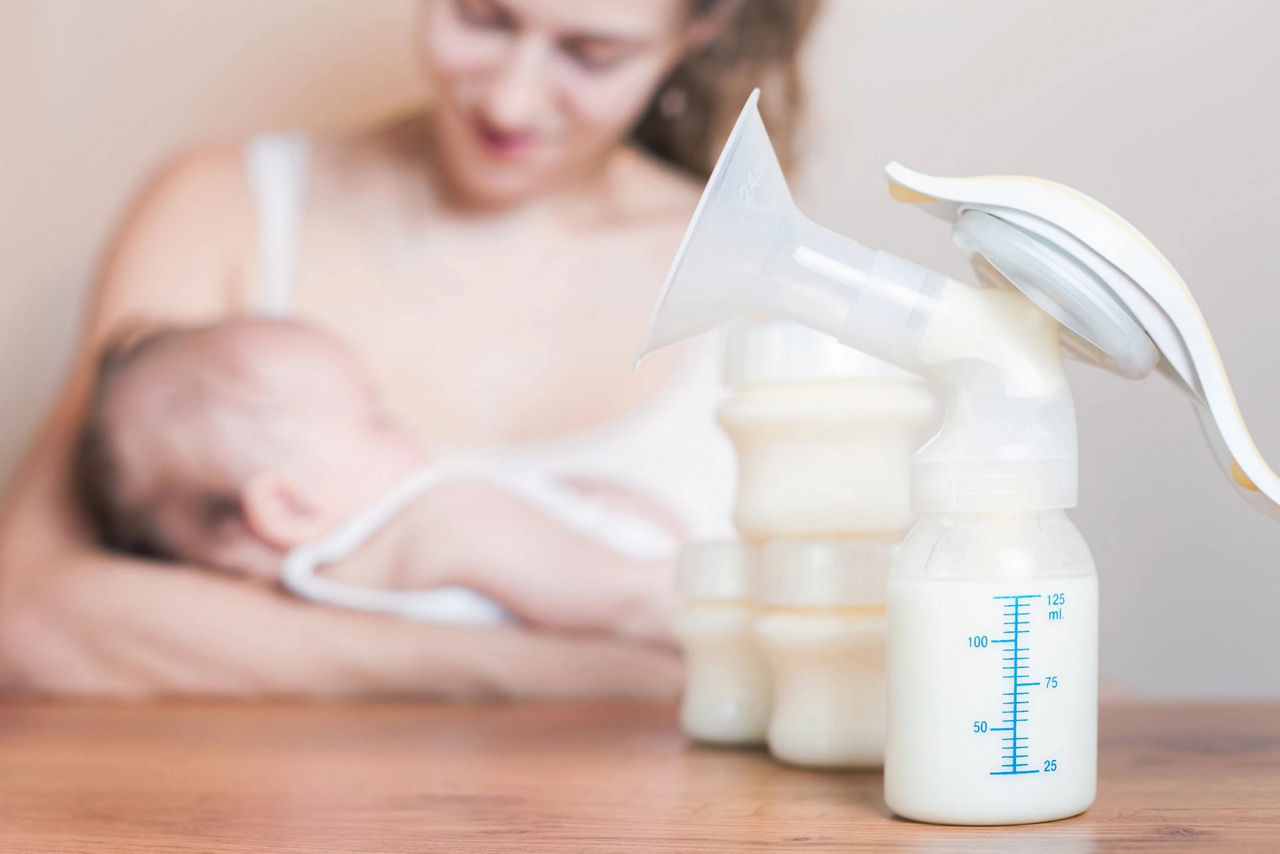Although it’s considered the most natural thing in the world, breastfeeding can take a little time to perfect – that’s why we created our ‘how to’ guide on breastfeeding, with advice on how to breastfeed successfully. Here we have answers to all your questions around how to breastfeed your newborn.
How to breastfeed

How to breastfeed
Watch this short video from Aptaclub for a step-by-step guide on how to breastfeed your baby.
Breastfeeding for beginners
Breastfeeding is undeniably best for your baby and completely natural for you both4. But like any new experience it can take a little time to master. So don’t be disappointed if you find things difficult at first. With the right technique and some practice, you’ll find that things soon get easier. With this in mind, we’ve put together some useful breastfeeding advice to make sure you’re on the right track. If you are having trouble you are not alone, so we also have advice for common breastfeeding problems.
Being comfortable will help your baby feed as well as possible. So experiment with a few different breastfeeding positions to see what’s best. Remember your comfort too, and make sure you’ve got a drink to hand as it can be thirsty work!

When does breast milk ‘come in’?
At around two to four days after birth, your breasts will feel fuller as you start to produce larger quantities of breast milk5.
The Science behind foremilk and hindmilk, powered by Nutricia
At the start of every feed, you will produce ‘foremilk’ – a thin, thirst-quenching liquid packed with carbohydrates, protein and vitamins, which will keep your baby hydrated. As your baby continues to feed, they will reach the ‘hindmilk’; this is thicker, more nutritious, higher in calories and will keep them fuller for longer6.
These are not two different types of milk but are the ends of a continuum which starts as foremilk and moves to hindmilk during a feed. Any breast milk that you feed your baby will provide them with all the nutrition they need and give them the best start in life6.
How to breastfeed your newborn⁷
- Position yourself comfortably in a supportive chair or with cushions
- Bring your baby to your breast and allow them to latch themselves
- The back of the neck and shoulders should be supported but their head should be free to move around
- Their whole body should be facing you during feeding, so make sure their tummy is against you at all times
- Let their arms move freely as they feed. You’ll find that allowing them to press or touch your breast will stimulate the milk.
How to get your baby to latch

- Hold your baby’s whole body close with their nose in line with your nipple
- Let their head tip back slightly so their top lip can brush against your nipple. This should help them open their mouth wide
- Once their mouth is wide open, bring your baby up to your breast (not the other way round)
- If your baby is latched on correctly their bottom lip will be curled back and the only visible area of your areola (the dark skin around your nipple) is above your baby’s top lip
- Painful feeding could be caused by your baby not latching on properly, so changing positions may help. Slip your finger between your nipple and their mouth to gently dislodge them, move your baby away from your breast and try to position them again.
In time, you’ll start to understand how your baby likes to feed, but until then look for these common signs that they’re latching on well, which means they’re likely to be feeding well too:
- They take a large mouthful of breast
- Their chin firmly touches your breast
- Your nipples and breasts don’t feel uncomfortable
- They come off the breast themself when they’ve had enough
- Their cheeks will look full and rounded as they feed. Also look out for movement around the ear – a good sign they’re swallowing
How much milk should you give your newborn in each feed?
Many new mums worry that their baby is not getting enough milk, but in the first few days, your newborn will only need a few teaspoons of colostrum a day as their tummy is about the size of a marble1. Despite this, they may well feed every hour and it’s perfectly normal for your baby to lose up to 5-10% of their birthweight in the first week through fluid loss8. However, if there is more than 10% weight loss, then speak to a health care professional about this as a clinical assessment should be done9. By the end of the second week, they usually will have regained this weight and will start to grow steadily.
How long should you breastfeed for?
Breastfeeding provides all the nutrition your baby needs and has many benefits, and once your baby is introduced to solid foods these benefit continue! Feeding your baby breast milk exclusively until 6 months and then with complementary foods until they are 2 years old will help give your baby the best nutrition in early life4.
How often should you feed your newborn?
Even if your baby is doing all of these things, you may still have concerns about the amount of milk they’re getting. There are no strict rules as to the number feeds a breastfed baby should have, and as your baby grows their needs will change, but as a guide they’ll feed every two-three hours, including day and night feeds10.
Here are a few ways to tell if your baby is getting enough food:
- From day 3-5 onwards they start to gain weight. Most babies regain their birth weight within the first two weeks
- From day 4 and for the first few weeks, their stools are yellow and quite runny. They should pass at least two a day
- They produce at least six wet nappies every 24 hours, from day 5 onwards
Remember, once your baby is full they will take themselves off the breast. Some babies will naturally take a break during a feed, so it’s always a good idea to wait a while to see if they’re just resting or if they’re actually full11.
Breastfeeding equipment

Shopping for breastfeeding equipment can be overwhelming so it is helpful to look near the end of your pregnancy. Useful equipment to have includes:
Nursing/breastfeeding bras
- These help to breastfeed easily by unhooking to open fully allowing easy feeding
- Make sure these aren’t too tight as pressure on your breasts can increase chances of mastitis
Breast pump
- If you are planning on expressing breast milk
Breast pads
- Breasts may leak a little between feeds
Breastfeeding in public
Breastfeeding in public is something that will often we needed if you are out and about with your baby. It is common to feel a bit nervous about breastfeeding in public for your first few feeds. Carrying a muslin can help to cover you if you feel shy feeding in public areas.

You are protected by law to be able to breastfeed in public spaces, for example public transport, cafes, cinemas, shop etc. under ‘The Equality Act 2010’ and so should be able to feel comfortable to feed anywhere2!
related articles
Learn more about breastfeeding

Get in touch with our Careline experts
Our nutritionists and feeding advisors are always on hand to talk about feeding your baby. So if you have a question, just get in touch
- Lording, Ros. Breastfeeding Review, 2008;16(3):32.
- Legislation.gov.uk. (2019). Equality Act 2010. [online] Available at: http://www.legislation.gov.uk/ukpga/2010/15/contents [Accessed 18 Dec. 2019].
- White, R. Breastfeed Med, 2017;12(7):398-400.
- Agostoni, C., et al. J Pediatr Gastroenterol Nutr, 2009;49(1):112-125.
- Neville, M. et al. Am J Clin Nutr, 1988;48(6):1375-1386.
- Nielsen, S., Beverly, R. and Dallas, D. Frontiers in Nutrition, 2017;4.
- Banginwar, A., et al. J Fam Community Med, 2011;18(2):74.
- Australian Breastfeeding Association. (2019). Baby weight losses and weight gains. [online] Available at: https://www.breastfeeding.asn.au/bf-info/common-concerns–baby/baby-weight-gains [Accessed 18 Dec. 2019].
- Nice.org.uk. 2020. Recommendations | Faltering Growth: Recognition And Management Of Faltering Growth In Children | Guidance | NICE. [online] Available at: https://www.nice.org.uk/guidance/ng75/chapter/Recommendations [Accessed 1 May 2020].
- Casiday RE, et al. Eur J Clin Nutr. 2004;58(9): 1290-1296.
- Li R, Fein SB, Grummer-Strawn LM. Pediatrics. 2010;125(6):1386-93.
Last reviewed: 13th July 2020
Reviewed by Nutricia’s Medical and Scientific Affairs Team


